If you find videos lagging or stuttering on your Windows 11 PC, it may be that your system settings aren't configured properly. This can also cause other issues with video playback, preventing you from enjoying movies and shows on your device. Fortunately, you can deal with such problems and enjoy smooth video playback in media-playing apps as well as streaming services by adjusting the system settings on your PC in the following ways.
Adjust video playback settings
Media-playing apps based on the Universal Windows Platform (UWP), like Windows Media Player, Photos, and even third-party options like Netflix and Hulu rely on the video platform that is built into the OS. So, you can find various settings in Windows itself that can help adjust the video playback on these apps.
- Open the Settings app from the Start menu or the
Win + Ishortcut and click on 'Apps' on the left.
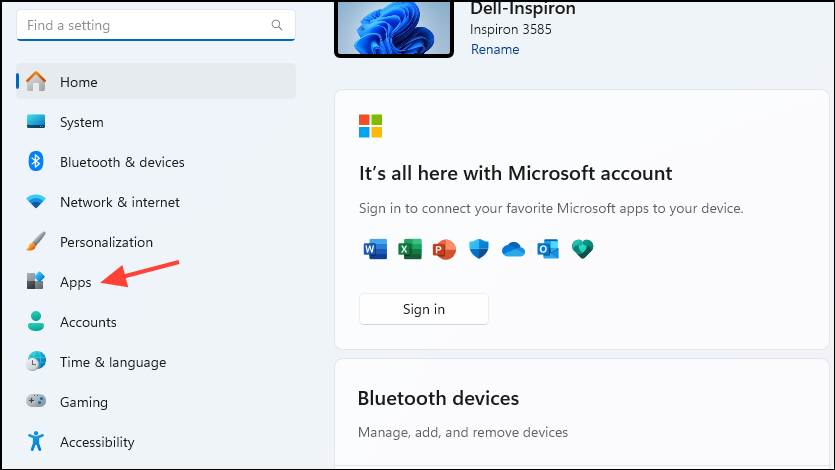
- On the Apps page, click on 'Video playback'.
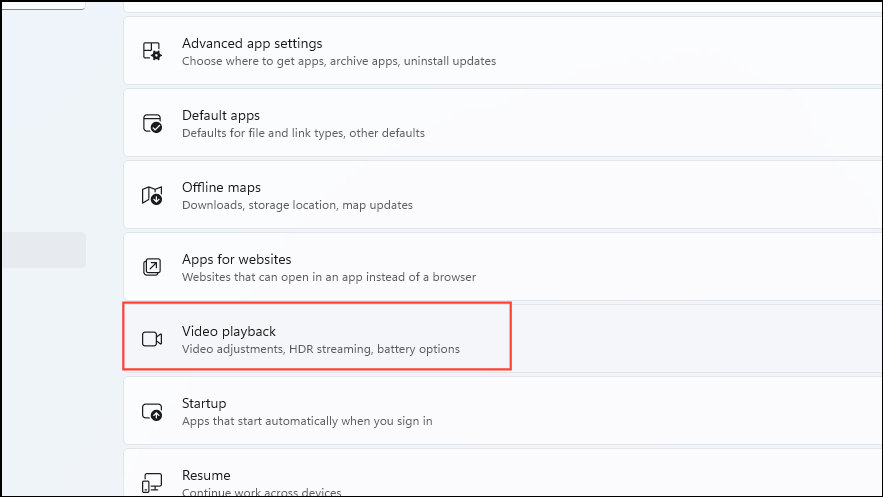
- Here, you can choose whether to play video at a higher or lower resolution. The former option will use more bandwidth, while the latter can come in handy when you want to save bandwidth. If your network speed is low, enabling this option by clicking on the toggle can prevent the video from buffering and lagging.
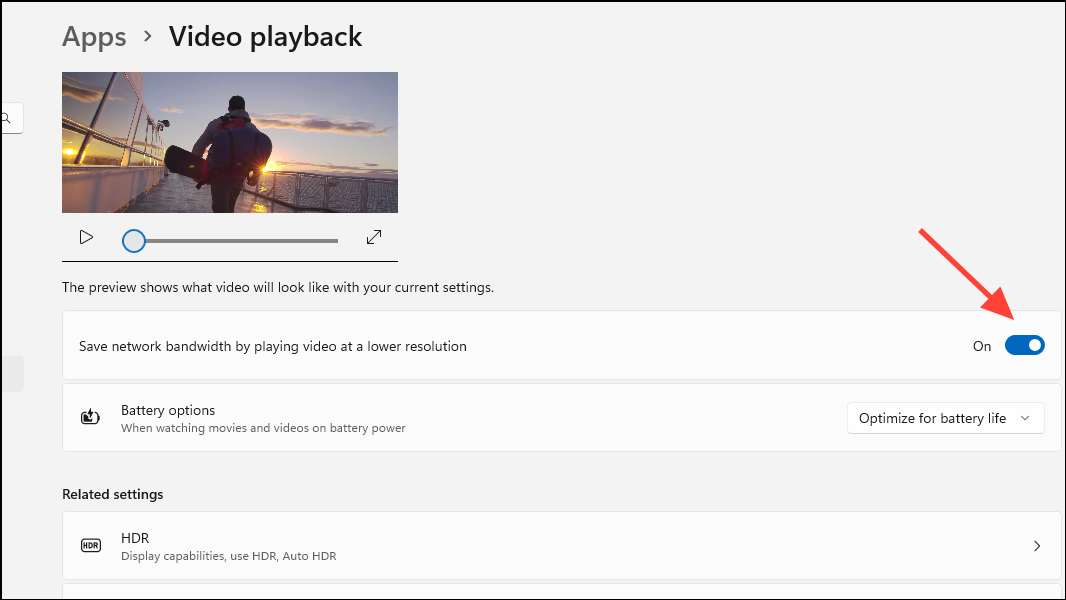
- Alternatively, if you keep this option disabled, you will see another option that lets you save power by lowering the video resolution when your laptop is running on battery. This can also help prevent videos from lagging.
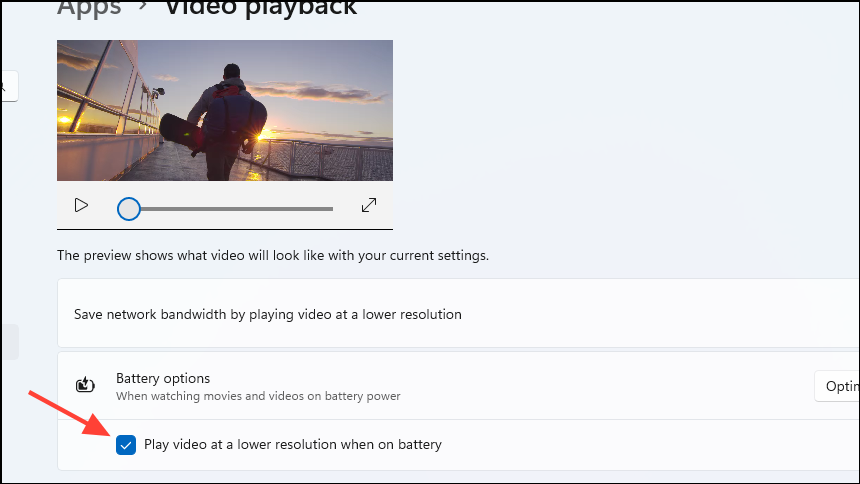
- You may also find another option that automatically adjusts the video based on ambient lighting. Disabling this may also provide smoother playback.
Change the battery settings
If you're using a Windows 11 laptop to watch videos and often do so while the device is on battery power, you can adjust the settings to either improve video playback or the battery life.
- If you want to maximize the battery life of your device, you can disable the option that adjusts the video based on ambient lighting when your device is running on battery.
- Additionally, you can lower video resolution to extend the battery life of your laptop.
Some useful tips
You can also follow some of these tips to get smoother video playback on your Windows 11 PC.
Tip 1: Turn on software rendering
In case you only experience issues when streaming online videos, turning on software rendering might help fix the problem. This can be especially handy if your GPU is quite old.
- Open the Control Panel from the Start menu and click on 'Network and Sharing Center'.
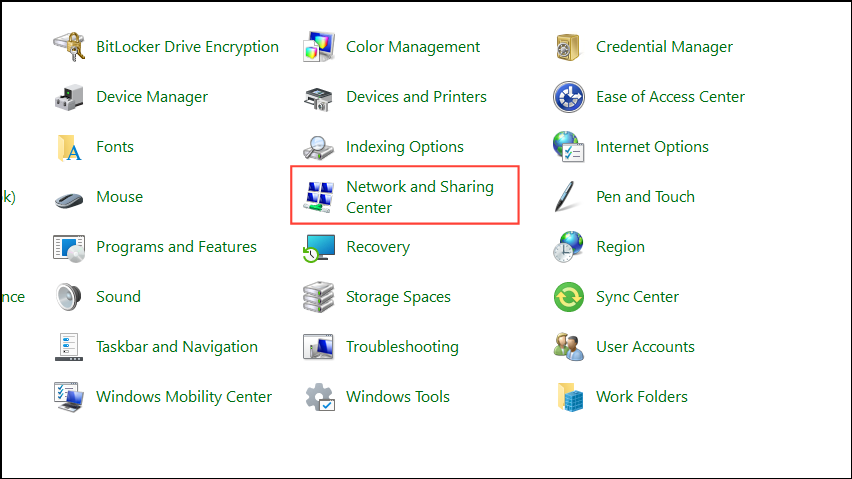
- Then click on 'Internet options' on the bottom left.
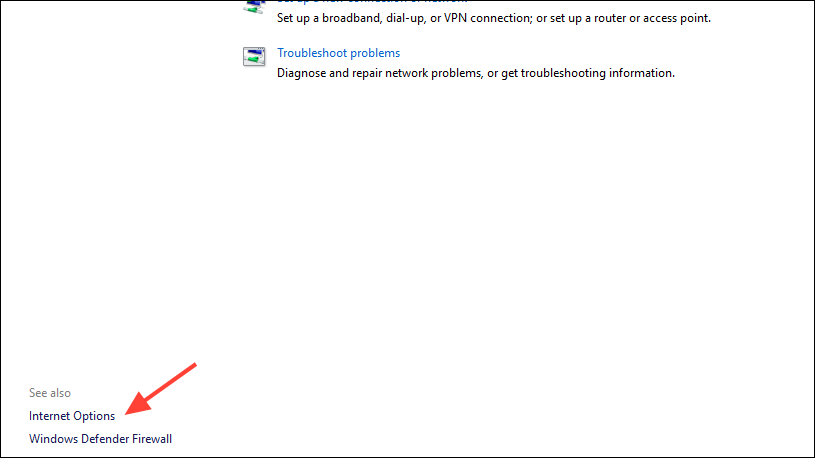
- When the 'Internet Properties' dialog box opens, go to the 'Advanced' tab and click on the 'Use software rendering instead of GPU rendering' checkbox to enable it. Then click on the 'OK' button.
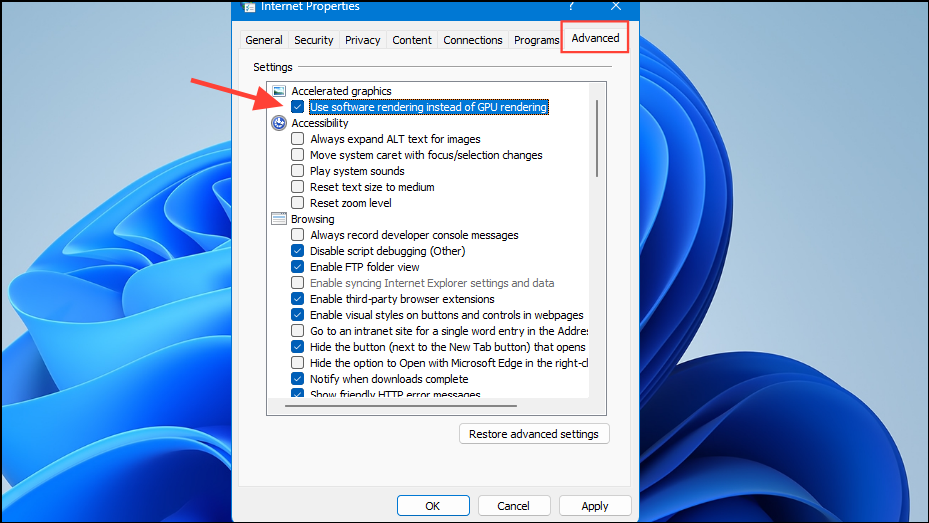
Tip 2: Change the graphics settings for media apps
Windows 11 also lets you adjust the graphics settings for individual programs, like your media-playing apps. You can change the settings to make the OS prioritize performance, resulting in smooth video playback.
- Open the Settings app and click on 'System' on the left.
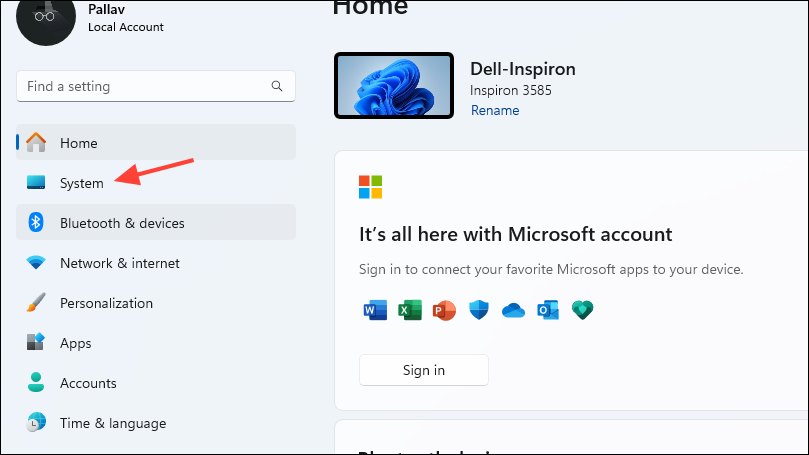
- On the System page, click on 'Display'.
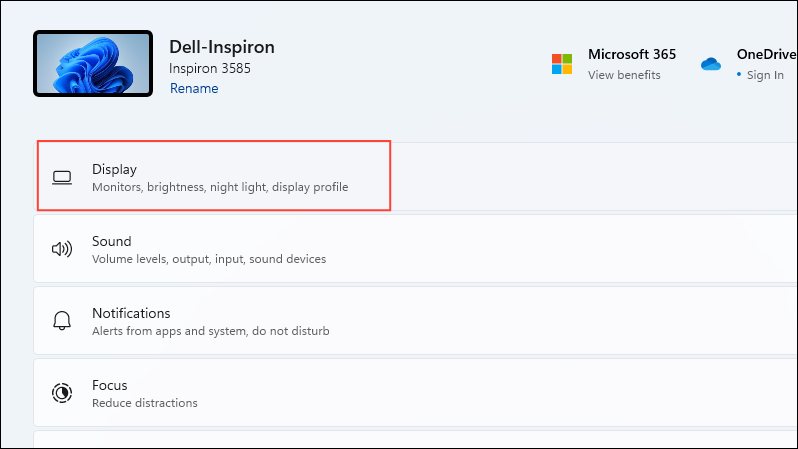
- Scroll down to the 'Related settings' section and click on 'Graphics'.
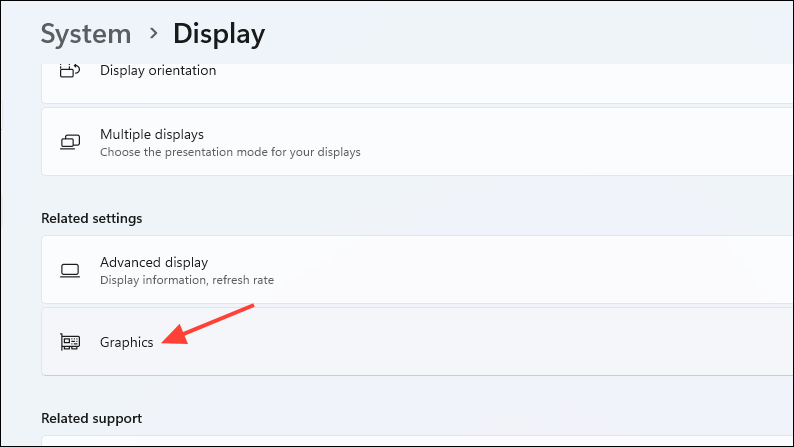
- Now, you will see a few apps on this page. Click on an app, such as your media-playing app to expand the dropdown.
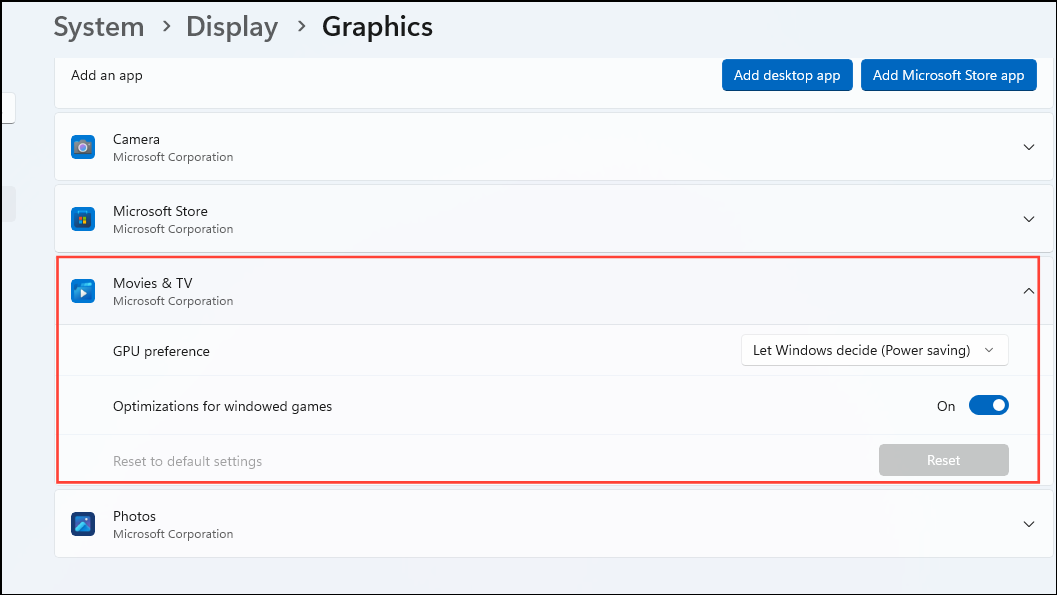
- Click on the 'GPU preference' dropdown and select 'Power Saving' if your device is running on battery. On the other hand, if you want to improve performance, select 'High Performance'.
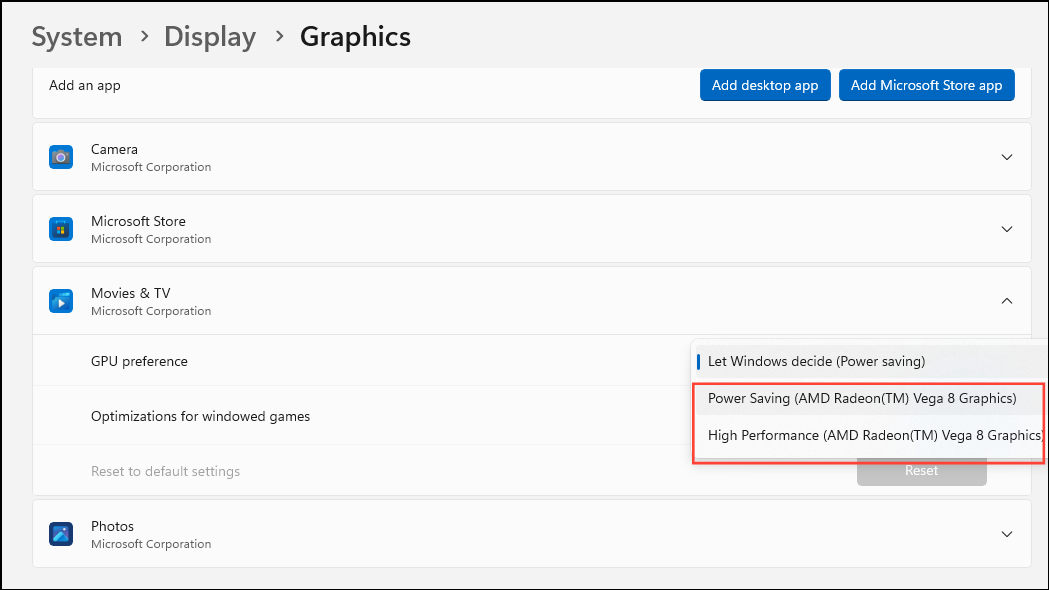
- You can also add additional apps for which you want to adjust the graphics settings by clicking on the 'Add desktop app' or 'Add Microsoft Store app' button at the top. This allows you to add other apps you use to play media and control their graphics settings from here.
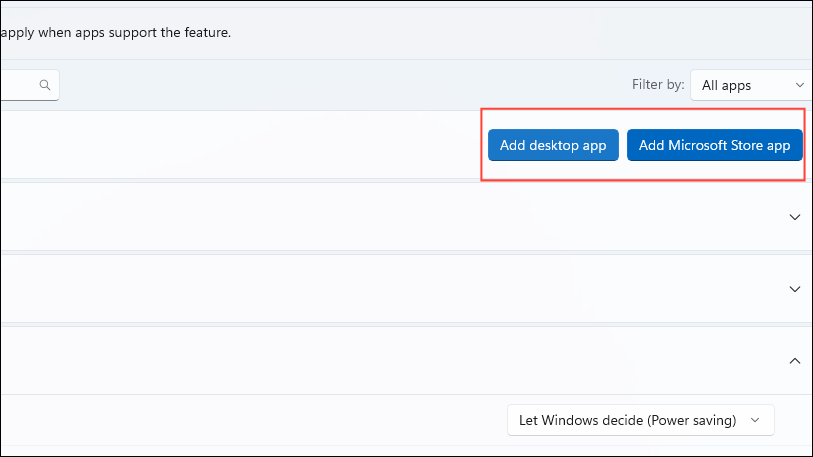
Tip 3: Turn off Hardware Acceleration
Hardware acceleration lets programs offload certain processes, like decoding and rendering to the GPU or graphics processor since it can run those processes more efficiently than the CPU. This frees up the CPU for other tasks and can help improve performance. However, since hardware acceleration is not always stable, turning it off may sometimes help result in smoother playback.
Depending on the application you use to watch videos, there are different ways by which you can disable hardware acceleration. In most cases, you will need to access the Settings page of the app to do so.
Things to know
- You should also check the video files you are trying to play. Try playing the same files with different apps. If all the apps experience problems when playing those video files, the problem may be with the files themselves. They may have become corrupted, in which case you will have to replace them.
- Make sure your media playing app is updated to the latest version. Old apps may have bugs or may otherwise be unable to play certain video formats. Alternatively, try resetting it, which can help get rid of glitches affecting the video playback experience.
- You can find third-party tools to repair damaged or corrupted video files and then try playing the files again after repairing them.
- Other things you can try to improve video playback include updating Windows to the latest version, checking and installing graphics driver updates, disabling unnecessary background applications, and running a malware scan on your PC.


